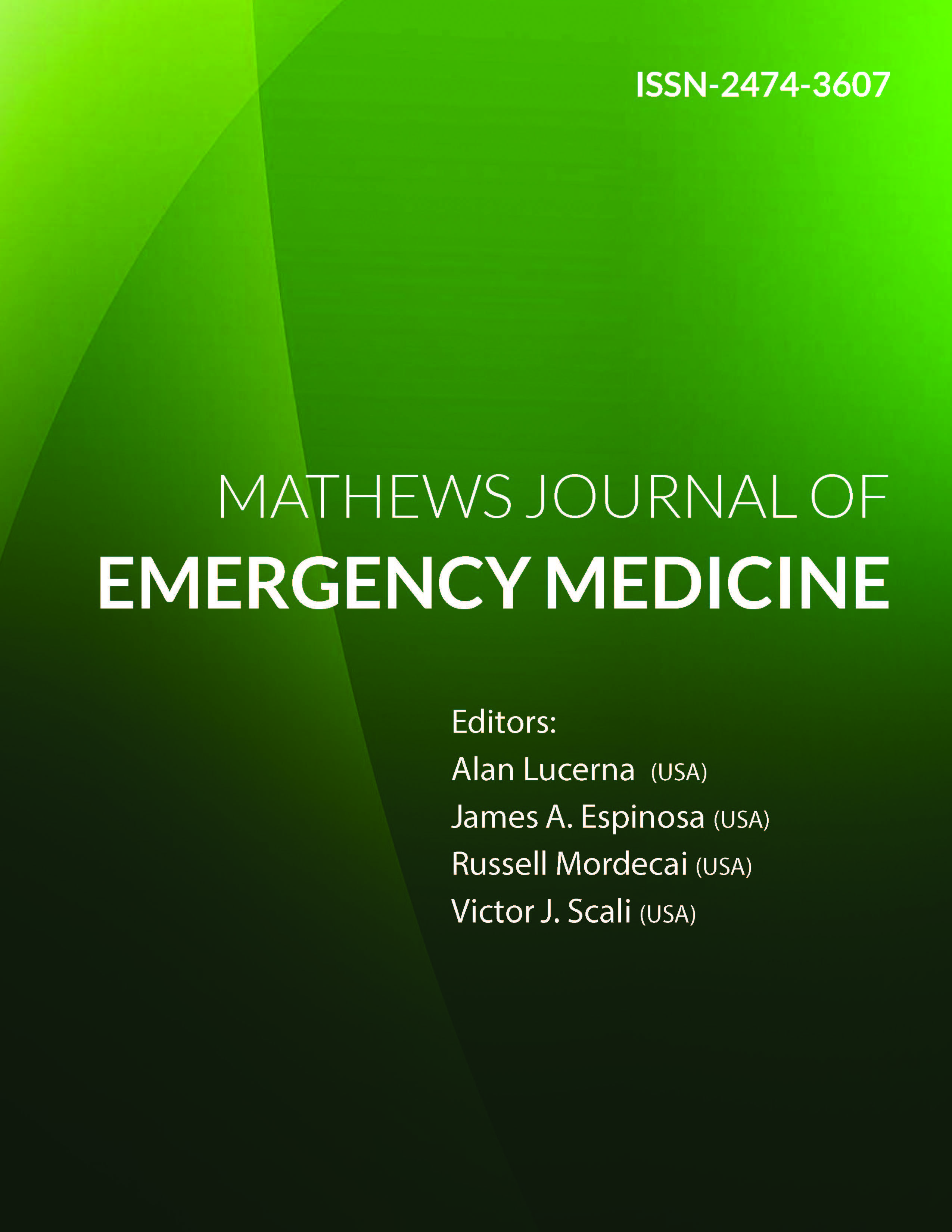
Information Links
Previous Issues Volume 8, Issue 2 - 2023
Sickle Cell Crisis and Emergency Department Visits: Is There a Correlation with the Weather and Seasons?
Mehvish Ahmed DO1, James Espinosa MD2,*, Syrita Farrow DO1, Alan Lucerna DO3 Victor Scali DO4
1Department of Emergency Medicine, Virtual Health System, Voorhees, NJ, USA
2Department of Emergency Medicine, Jefferson Health-New Jersey Stratford, NJ, USA
3Program Director, Emergency Medicine, Jefferson Health-New Jersey Stratford, NJ, USA
4Director of Problem-Based Learning and Faculty, Rowan University School of Medicine, Stratford, NJ, USA
*Corresponding Author: James Espinosa, MD, Department of Emergency Medicine, 18 East Laurel Road, Stratford, NJ 08084, USA; Email: [email protected]
Received Date: May 26, 2023
Publication Date: June 9, 2023
Citation: Ahmed M, Espinosa J, Farrow S, Lucerna A, Scali V. (2023). Sickle Cell Crisis and Emergency Department Visits: Is There a Correlation with the Weather and Seasons? Mathews J Emergency Med. 8(2):51.
Copyright: Ahmed M, et al. © (2023)
ABSTRACT
Background: One of the medical issues related to sickle cell disease is sickle cell pain crisis. Weather has been discussed as a trigger for sickle cell pain crisis. Aim of Study: The aim of this study was to the study relationship between sickle cell pain crisis presentations in the emergency department (ED) population of three community hospital emergency departments and local weather patterns. Materials and Methods: The study was a retrospective review of data from the ED information system, coding for the number of sickle cell pain crisis presentations per day, for selected random days. Variable studied included maximum wind speed per day, humidity (in percent), average air temperature, days with a max air temperature >80 degrees F, days with a minimum air temperature <32 degrees, maximum wind speed/humidity (calculated), rainfall, and presentations by season. Results: The relationship of rainfall to sickle cell presentations was statistically significant in the directions of significantly less sickle cell presentations on above average rainfall days. [p=0.045] The number sickle cell patient visits did not show a statistically significant relationship to the remaining variables. Conclusion: Our data support the finding of a decrease in sickle cell presentations on below average rainfall days. We did not find a relationship to high wind speed and low humidity or other variables other than rainfall. Our result may be a lag effect from days with higher rainfall. The precipitating trigger may be the days with higher rainfall with presentations after such days but not on such days. It may be that there were other precipitants and triggers that are cleared by higher rainfall, such as dust or environmental pollutants. Further study would be needed to evaluate such a hypothesis.
Keywords: Sickle Cell Pain Crisis, Sickle Cell Pain Crisis and Emergency Department, Sickle Cell Pain Crisis and Weather